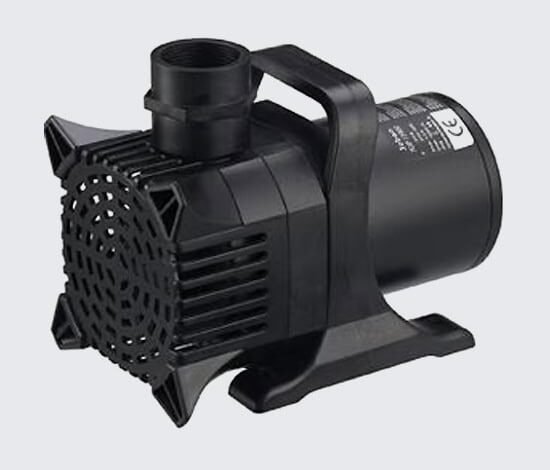Maintaining Submersible Fountain Pumps: Complete Maintenance Guide

Submersible fountain pumps are popular for adding beauty and functionality to ponds and water features. They work tirelessly to keep your water clean and moving, enhancing the overall health of your aquatic environment. However, like any mechanical equipment, submersible pumps require regular maintenance in order to ensure that they operate efficiently and have a long lifespan. If you plan to get a submersible pump for a fountain, you need to know how to maintain it. This article will guide you through critical maintenance tasks, troubleshooting common issues, and seasonal care to help you get the most out of your pump.
Why is Regular Maintenance of Submersible Pumps Crucial?
If you want to get a submersible pump for a fountain, you should know how to maintain your submersible pump. Maintenance for submersible pumps is vital for several reasons:
- Performance: Regular upkeep ensures that your pump runs smoothly and efficiently. A well-maintained pump delivers consistent water flow, which is essential for keeping your pond or water feature in good condition.
- Longevity: Just like any other equipment, regular maintenance can extend the life of your pump. Addressing minor issues before they become major problems can prevent costly repairs or replacements.
- Efficiency: A clean and well-maintained pump operates more efficiently, saving you money on energy costs. An inefficient pump can lead to higher energy bills and reduced performance.
Routine Maintenance Tasks
1. Regular Cleaning
- Removing Debris: One of the most important tasks is regularly cleaning the pump. Over time, leaves, algae, and other debris can accumulate and obstruct the pump’s intake, reducing water flow and straining the pump. To clean the pump, turn off the power, carefully remove it from the water, and clean the intake screen and other accessible parts. Rinse them with water and remove any debris.
- Cleaning the Intake and Filter: The intake screen and filter are crucial for keeping debris out of the pump. They should be checked and cleaned regularly, ideally every few weeks or more frequently, if your pond is prone to high debris levels. A clogged filter can decrease the pump’s efficiency and potentially cause damage.

2. Checking and Adjusting Flow Rates
- Inspecting Flow Rate: Regularly check the pump’s flow rate to ensure it’s operating correctly. If you notice that the water flow is weaker than usual, it might indicate a problem, such as a clog or a malfunction. The pump’s manual usually provides guidelines on the optimal flow rates.
- Adjusting Settings: Many pumps come with adjustable flow rates or spray patterns. Ensure these settings are correctly adjusted for your specific needs. Sometimes, changes in water levels or seasonal factors might require you to tweak these settings for optimal performance.
3. Inspecting Pump Components
- Electrical Connections: Since the pump is submerged, checking the electrical connections is crucial for safety and proper operation. Ensure that power cords are not damaged as it could lead to electrical failures or even pose a safety risk.
- Pump Housing and Parts: Regularly inspect the pump’s housing and internal components for signs of wear and tear. Look for cracks, rust, or other damage affecting the pump’s performance.

Troubleshooting Common Issues
1. Reduced Flow Rate
- Potential Causes: If you notice that the water flow from the pump is weaker than usual, common causes include clogs in the intake or filter or issues within the pump itself. Debris buildup can obstruct water flow, while mechanical issues might affect performance.
- Solutions: First, check and clean the intake screen and filter. If cleaning doesn’t resolve the issue, you may need to inspect the pump for internal clogs or mechanical problems. In some cases, disassembling the pump might be necessary to clear blockages.
2. Unusual Noise or Vibration
- Identifying Sources: Unusual noises or vibrations can be caused by debris inside the pump, misalignment, or worn-out parts. If you hear grinding, rattling, or any unusual sounds, it’s a sign that something might be wrong.
- Fixes: Turn off the pump and inspect it for any foreign objects or debris. Ensure that all components are properly aligned and that there are no loose parts. Clean the pump thoroughly and, if needed, replace any worn-out parts.
3. Pump Not Operating
- Power Issues: If the pump isn’t operating, first check the power supply and connections. Ensure the pump is properly plugged in and the power source is functioning. Sometimes, resetting the circuit breaker can solve the problem.
- Mechanical Failures: If power issues are not the cause, the pump might be experiencing mechanical failures. Inspect the pump for signs of damage or malfunction. In some cases, professional repair might be needed.
Key Insights
Maintaining your submersible fountain pump is essential for keeping it running smoothly and efficiently. Regular cleaning, checking for issues, and promptly addressing problems can extend your pump’s life and ensure it performs well. Seasonal care and proper storage also play a significant role in maintaining your pump’s functionality. Following these tips can allow you to enjoy a beautiful and well-functioning water feature for years.














